Around the many corners in the streets in Paris, when not too focused on the stunning architecture, one can easily spot the ceramic tile mosaics by Invader. Amidst an active street art scene is Patrick Lerouge, a collector whose passion is focused mainly on one American street artist, Futura (with a major show coming up in Singapore), with a home filled with sprayed colours, while part of his collection has traveled to various museums.
LARRY’S LIST met and spoke to Patrick Lerouge, who talked about his street art journey, his perspective as a witness of the street art movement in France, and how fashion designer Agnès B. influenced his perception of art collecting.
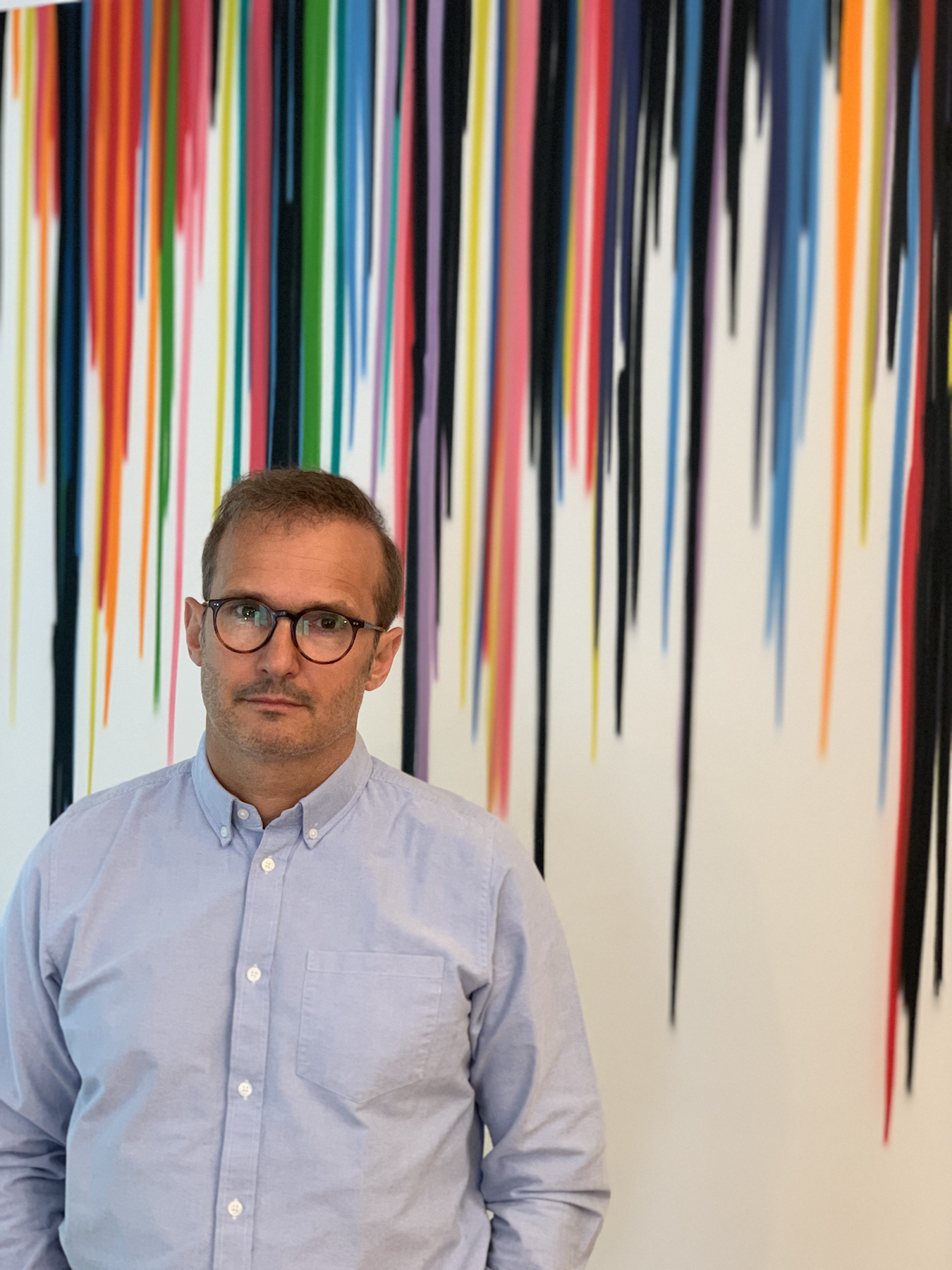
What made you start collecting art? What is the main motivation behind your collecting?
A mix of various motivations made it really natural without any real plan.
At 15 years old, I used to be DJ in a radio station in France, I was breakdancing in nightclubs, and doing graffiti at night. This whole new multi-disciplinary art movement of street art was the answer for me, breaking the rules but participating in creating something new with a positive approach. Later on, I stopped these activities but wanted to find a way of keeping them alive. Starting to hunt for some relics was the answer. Art was the ultimate “piece” to find and have.
Without realizing, I also was in a propitious family environment. My father owned a large print company and was printing many auction catalogues of the market. My mother was a curator in a local Museum and fighting to educate people to contemporary art – which at that time was not easy as today. In fact, without knowing I was some sort synthesis of both of them with my own approach.
One aspect of art and collecting that I like is that it is a timeless traveling tool. Art also enables me to travel in the past, present and Futur(a). Maybe some sort of a “Peter Pan syndrome” where it makes me feel that I hold the time.
Why were you particularly interested in graffiti and street artists?
As I mentioned, I did graffiti myself when I was younger. In 1981-82, I discover this whole art movement thanks to Sidney on Radio 7 and Bernard Zekri with “Europe 1/ New York City Rap tour”. I was totally fascinated by this new energy and creativity that was coming form the street and by default not seen as serious. I knew it was really serious and not to fade away.

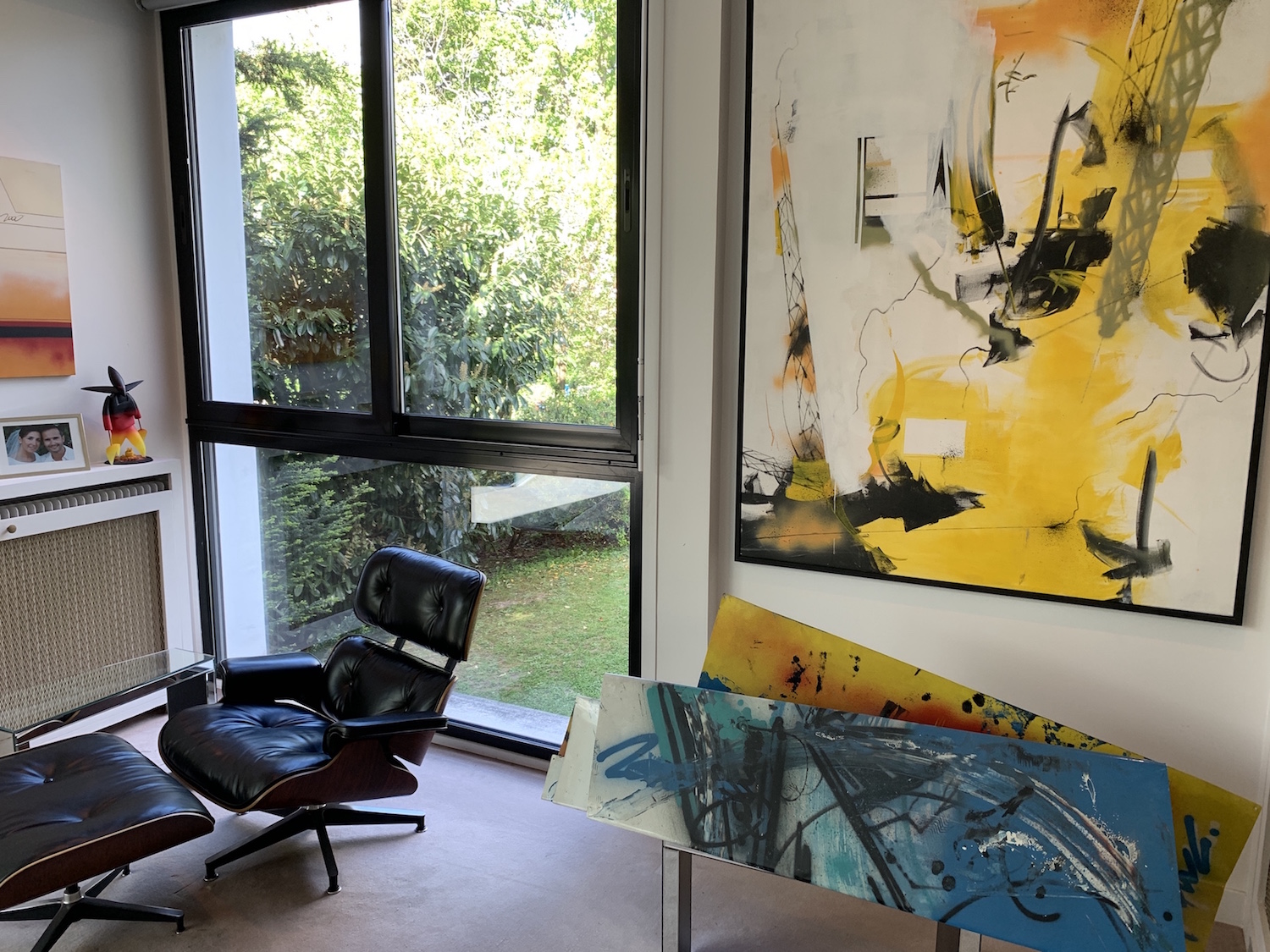
When did you fall in love with a piece of art?
I fell in love every time I discover a new Futura painting. For example “Bird cage”, 1989, was the very first piece I acquired. I was about 30 and started making decent money which permitted me to make my dream come true, acquire this painting, “Bird cage”. The jump from album cover, books to an authentic artwork, a canvas — the spray paint, its smell, took me to an other universe. Like a very first shoot of heroin, I became immediately addicted, wanted some more and started the journey in exploring all the sides of this artist, Futura.
What do you consider when deciding to collect an artist?
Many aspects, as well as a study of the artist’s journey, and of course I ask this question, “Will I still see him/her there (in the art history) in at least 50 years?”

What was the first and the latest artwork you have collected?
A Futura piece of course. Hard to follow-up as the work of Futura has always been evolving through the years with great surprises. In addition, if you know his work, it is very rich, exploring different directions. Some artists explore only one direction all their life. Futura offers many different directions which are still cohesive with his DNA.

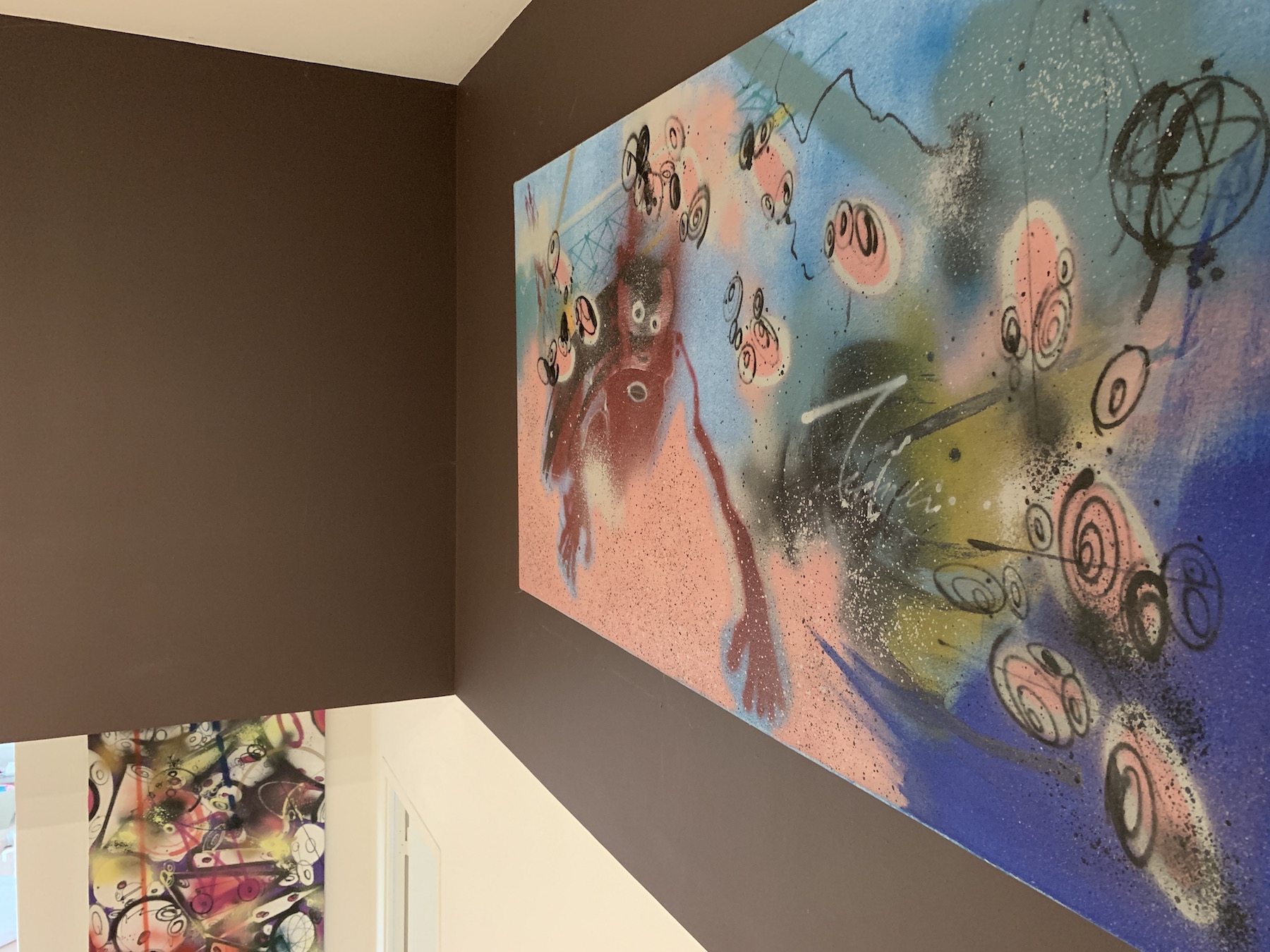
How many artworks do you own?
Few… this is not really important.
Where do you display your art collection?
Art is to be shared as much as possible, I mean good art. Some of my collection is displayed on my wall at FUTURALAND, but I try to lend artworks as often as possible.
Have you shared your collection with the public?
Of course, if the show is serious and well researched, I always share. I have participated in some exhibitions with my collection:
Fondation Cartier (2009), Paris School of Architecture (2009), Los Angeles—MOCA (2011), LE FLOW, Centre Eurorégional des Cultures Urbaines (2015), Pinacothèque de Paris (2015), la Condition publique (2017), ArtScience Museum in Singapore (2018), Museum of Fine Arts in Calais (2019), and some good ones coming up.
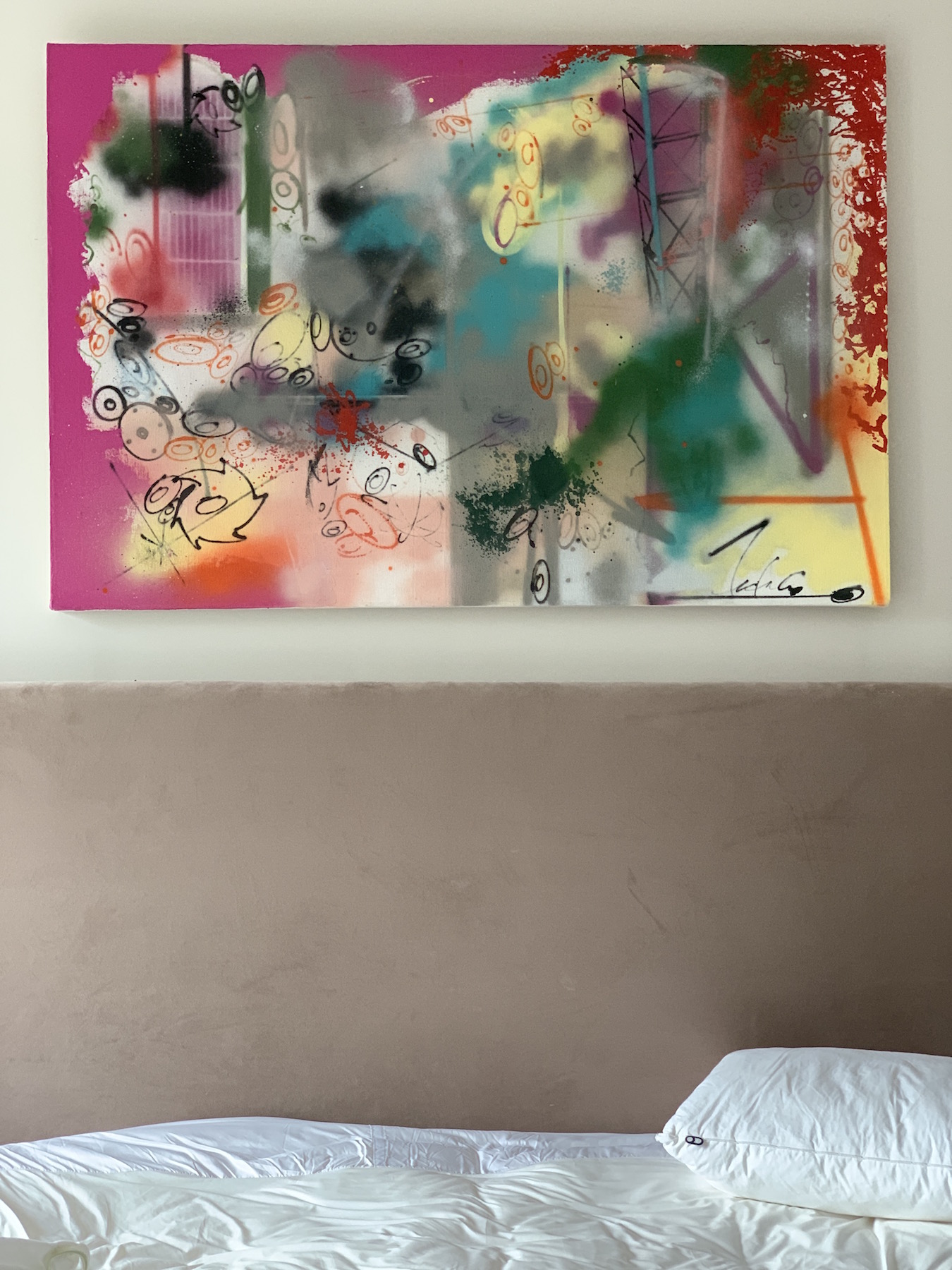
After collecting for the last 20 years, has your collecting approach changed over the years?
My approach remains the same, sincere and passionate.
The passion, I would say, grows. The more I learn years after years, the more passionate I get.

You once said that Agnès B., the French fashion designer was an inspiration and like a godmother figure; widely acknowledged as an important benefactor and patron of the arts since the 1980s. How did she influence your approach to collecting art?
First of all, yes, the movement owes so much to Agnes b. as well as Futura.
On a personal level, she did influence me on her approach of selecting artists and artworks without any speculative approach. Speculation pollutes and blinds you.
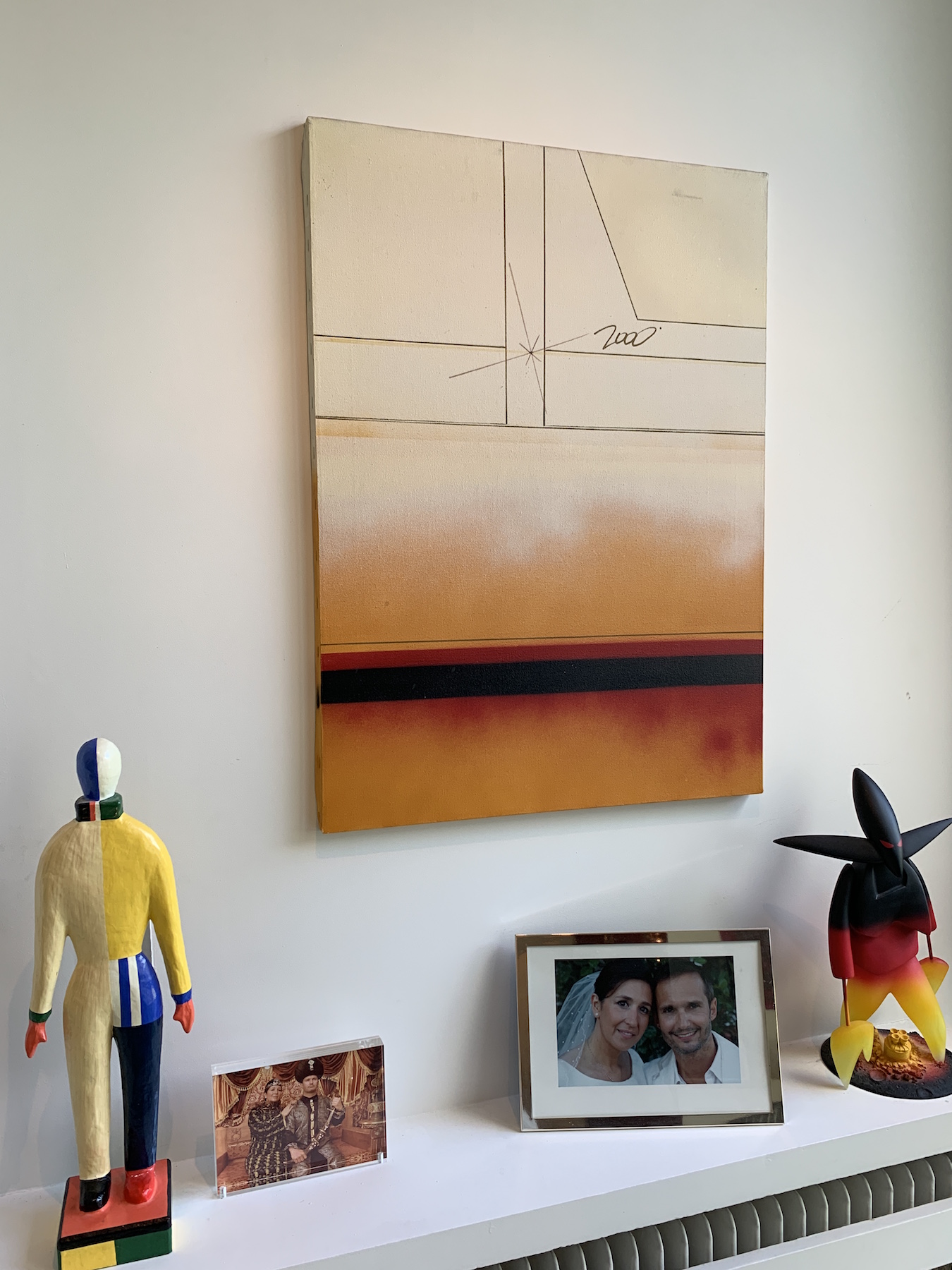
Paris is well known to be home of many internationally recognised street artists, why is street art so popular in Paris?
We had a weekly TV show in the early 80s that had a big influence because it was very popular. Sidney who had his radio show on Radio 7 got the opportunity to build this unique TV show called H.I.P H.O.P. This show attempted to be very educational on the whole movement and, of course, graffiti art. In addition, we had the Bernard Zekri’s Europe 1/ New York City Rap Tour.
Also to some extent, Futura happened to have married a French women (CC) that he met on the Europe 1 Rap Tour.
More recently, about 10 years ago, auction house Artcurial initiated promoting street art and organised auctions in a very successful way. Many auction houses followed, and art galleries for street art opened everywhere.

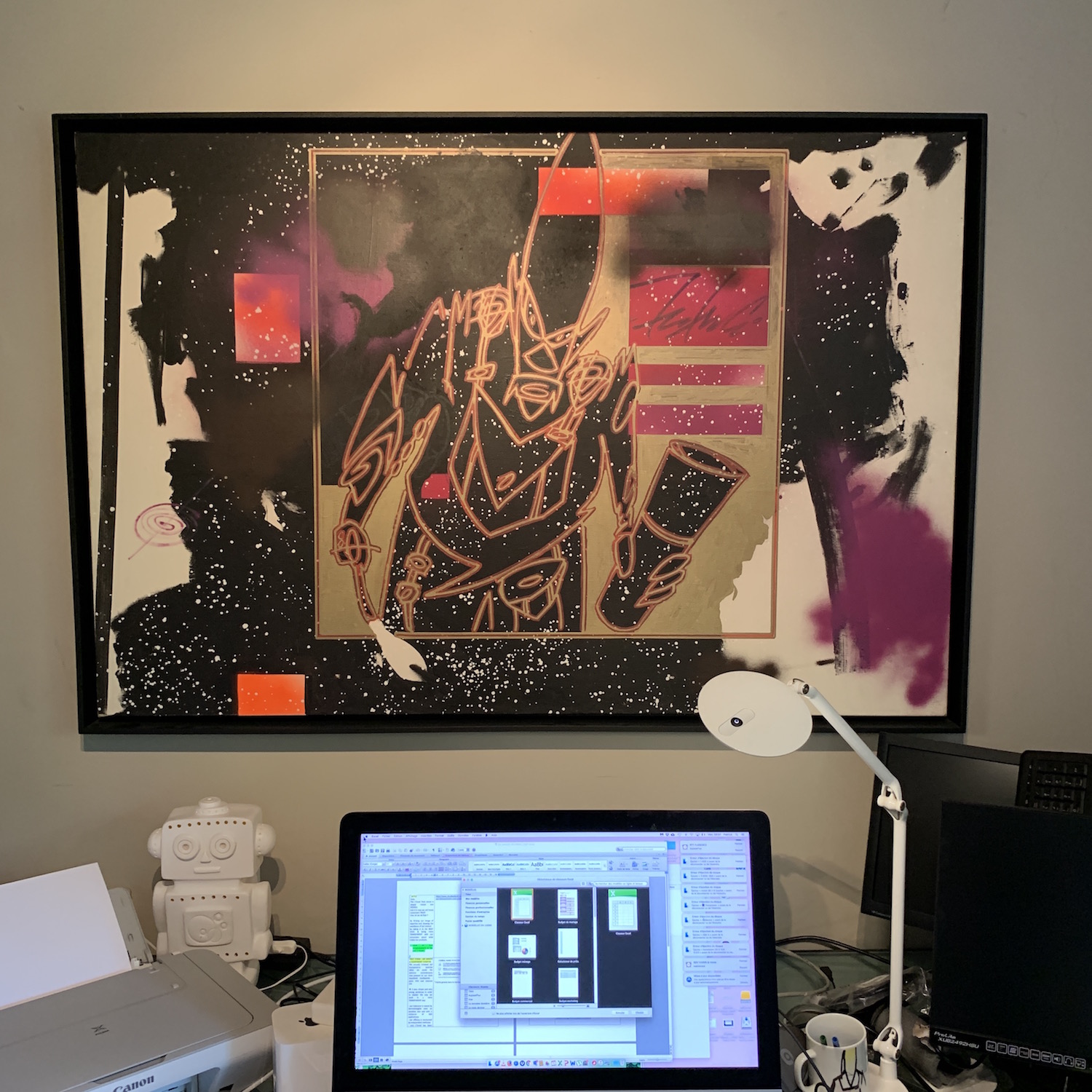
Some people question or doubt the act of collecting street art or selling street art in galleries, what is your view on this?
Doubts, questions are fundamental. Nevertheless, people tend to change their minds little by little and recognise street art as an indispensable part of the art spectrum.
On the other hand, like for every art movement, there is also some garbage. Galleries and collectors are there to filter, I guess.
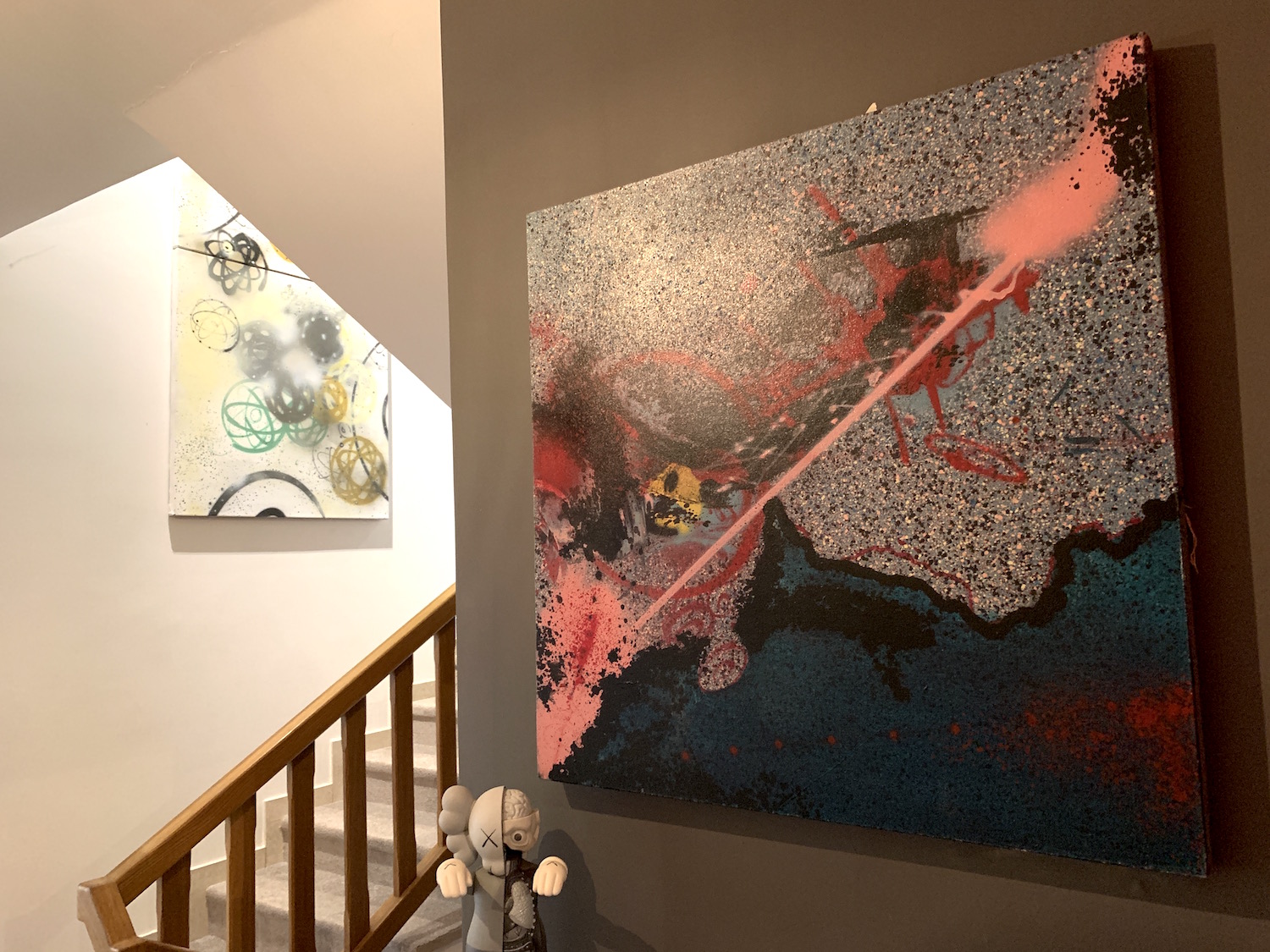
Since you are collecting Futura in-depth, can you tell me more about his artistic journey?
Futura was hot in the early 80s, breaking the rules with great success, and and even today in 2019, he is still one of the biggest influencers in today’s street culture. .
Throughout the years, he is an artist who always innovates and leaves his mark: brought graffiti to a canvas and major galleries (Sam Esses, Fun Gallery, T Shaffrazy…); made tours and collaborated with the iconic music band THE CLASH and some years later with UNKLE; has created today’s most iconic and collectible toys, sneakers, bikes, decks, clothes; is showing his work in all the continents without being locked in one certain style.
How is your relationship with the artist Futura?
I do not have the means to be a patron for the artist, I am merely a collector with passion, honesty and strong conviction. I guess I do own a few key artworks, and we also share many good times over the years; it has strengthen the bond between Futura and myself. Also, one of my sons is called Leonard as a tribute to him and to the very special painting, ‘Baby Formula’ (image below). For us this was sort of a magic receipe to have baby — the day this painting was hung, my wife got pregnant after many years of trial. As an homage, our baby is called Léonard.
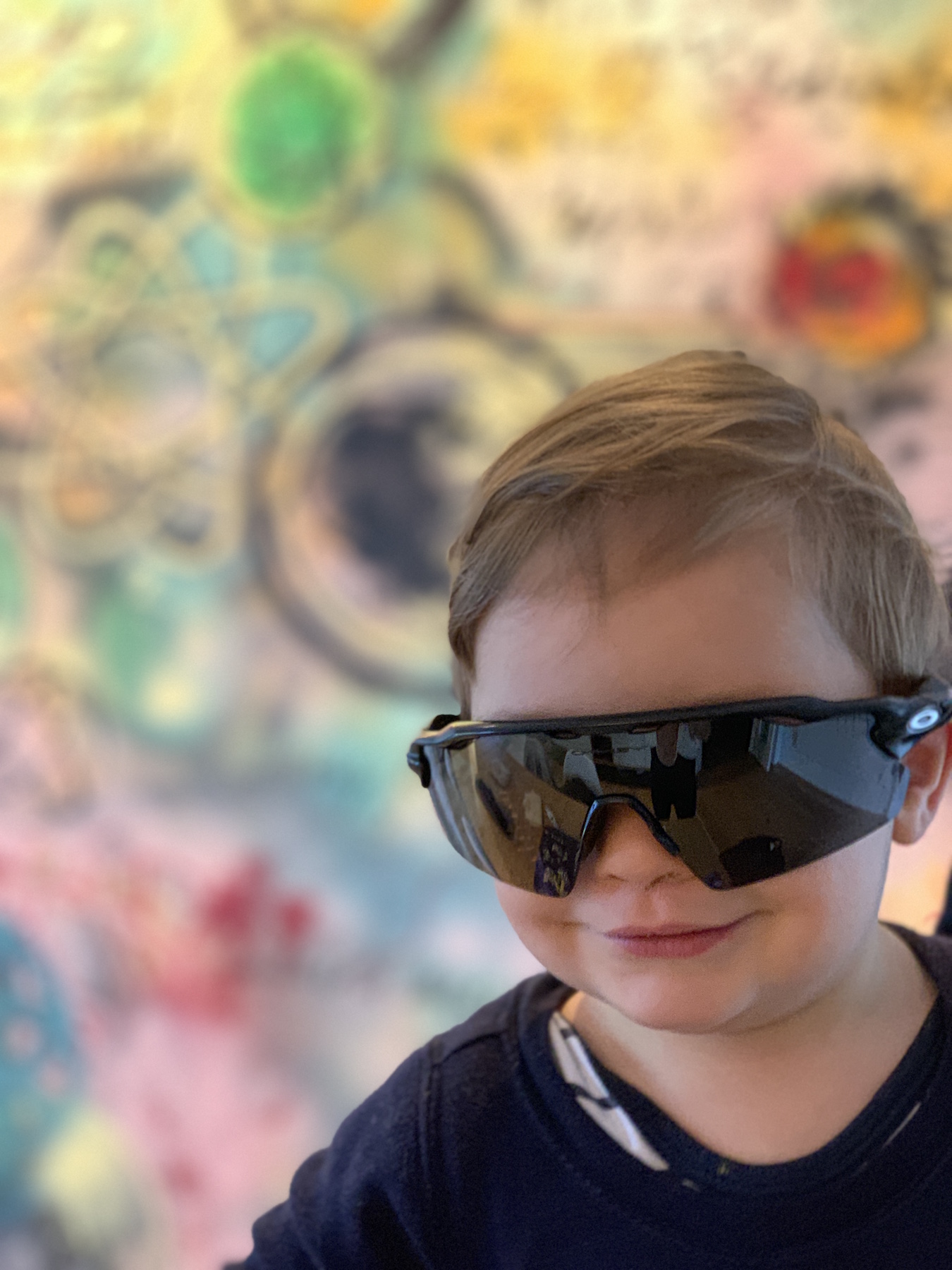
As you follow closely Futura’s practice, what exciting upcoming projects will he have?
Not to miss, this show coming up in Singapore presented by The Culture Story. The show is called “Constellation” after the aircraft that he serviced when he was in the navy. Maybe some coincidence but the word constellation talks about stars, space — favourite playground of Futura. Stars are aligned…

What was your happiest/most unforgettable moment in art?
It is yet to come…. soon.
A new acquisition is always something unique, and for me, a happy unforgettable moment. If I had to pick one, maybe my first acquisition (but also my most recent one until the next most recent one…) ?
What is your advice to other fresh collectors who are interested in collecting street art?
Start buying all sorts of books and read them carefully + go to many shows as possible + meet people and artists. Then, start to make little acquisitions and find your path, slowly but surely.
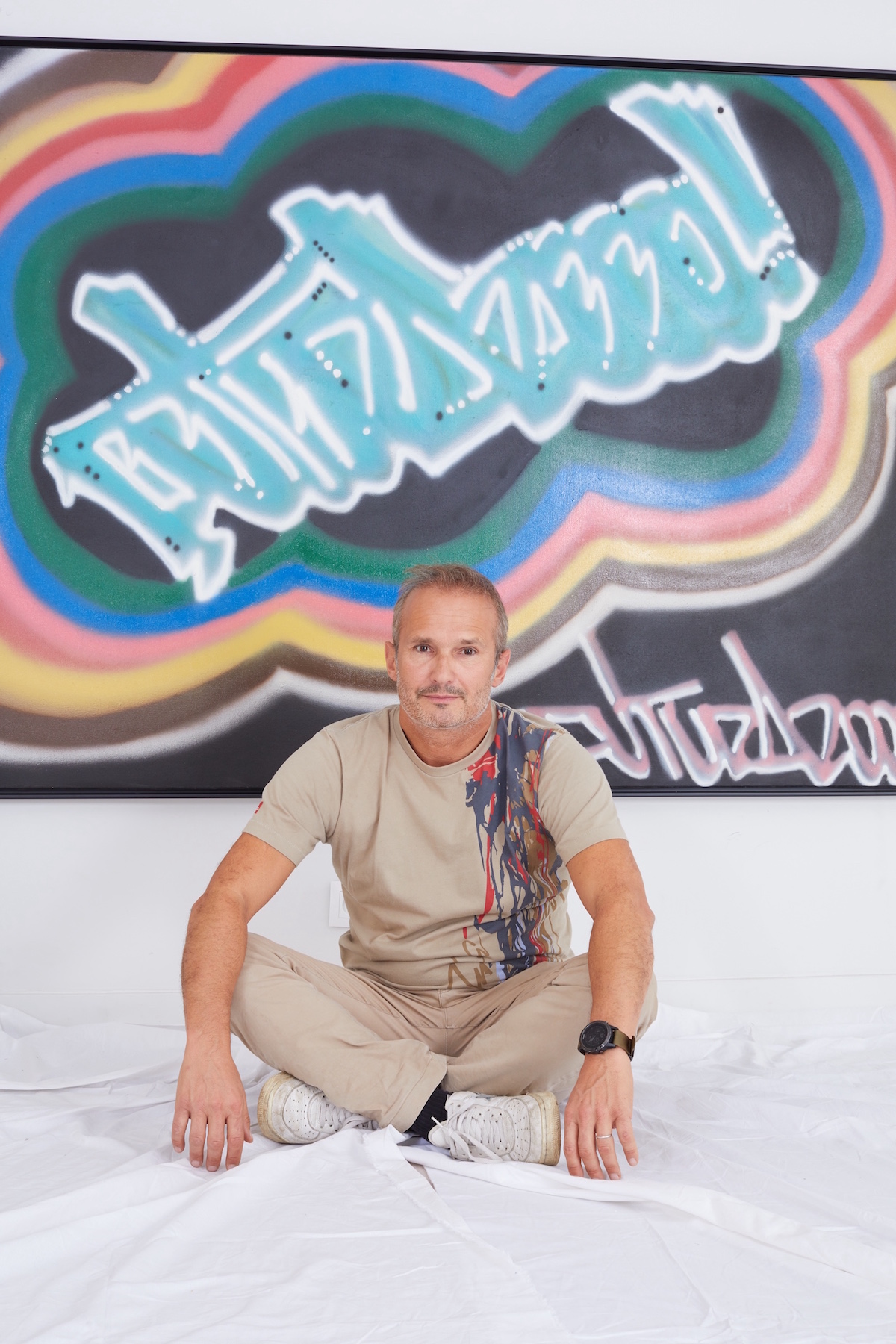
Instagram: @patrickthered
Related: Futura, @futuradosmil
Upcoming exhibition: CONSTELLATION by Futura, 30 May – 9 June, Singapore
Edited by Ricko Leung





